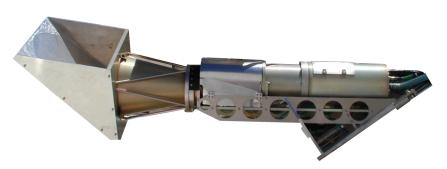Antennas of the VSA

VSA Antenna receiver
One of the most important parts of a radio telescope is its antenna system. This is as true of CMB telescopes as it is of any other. The signals we strive to detect are particularly weak, so the antennas have to be very efficient and reject strongly any pick-up of radio waves radiated from the surroundings which would spoil the results.
The CMB cosmological signals of interest to us have a typical angular extent of a degree to 10 arcminutes. At microwave frequencies this scale of beam width is conveniently provided by small reflector-horn antennas using a 90º offset parabolic reflector with a corrugated conical horn. The corrugatations, along the inside surface, concentric with the main axis, prevent waves from travelling along the surface. Otherwise the antenna response pattern would have large off-axis levels due to irregularities in the distribution of the electromagnetic fields across the horn aperture.
An advantage of this configuration is that the reflector can be redirected by rotating the reflector and the last horn section about the central axis of the horn. Combined with the tip-tilt table, this allows pointing to anywhere within 35º of the zenith in a simple straightforward manner. This rotation is achieved via a motor mount just above the horn.


